Fibre ring resonator
In close collaboration with the University of Auckland in New Zealand, the CNQO group has studied the nonlinear behaviour of light in a fibre ring resonator (cavity) pumped by an external laser in the presence of dispersion (Figure 6).
Temporal cavity solitons (TCS), i.e. outputs made by a single pulse of light on a steady background, have been observed in this system since 2010. We described the first merging of TCS (Figure 7). In the vectorial configuration with an input pump with two orthogonal polarisation components (top of Figure 8), we have described and observed spontaneous symmetry breaking between these components (Figure 8) as well as asymmetric balance by two symmetry breaking perturbations.
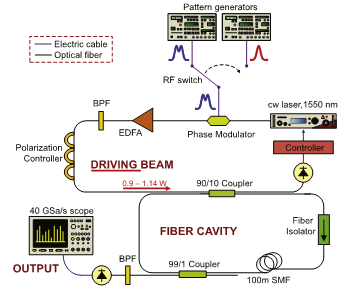 |
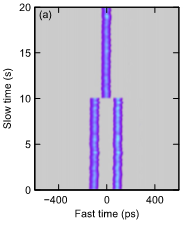  |
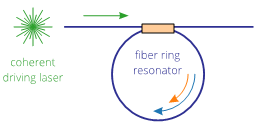 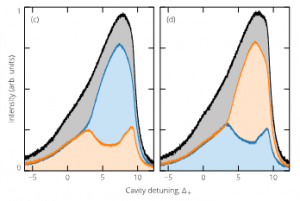 |
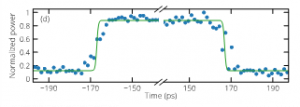 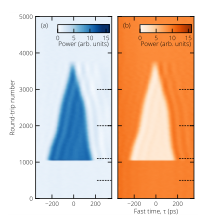 |
| Fig. 6: Fibre ring resonator (experiment) | Fig. 7: Merging of two TCS. Stored energy before during and after merging | Fig. 8: Spontaneous symmetry breaking of two orthogonal polarisation components | Fig. 9: Shape and collision of two polarisation domain walls |
In the presence of two orthogonal polarization components, regions of the resonators can have one or the other polarization component dominating. At the boundary of these regions, polarization domain walls can form (top of Figure 9). These domain walls can be stationary of move towards each other until mutual annihilation takes place (Figure 9).
Recent References
K. Jang, M. Erkintalo, K. Luo, G.-L. Oppo, S. Coen and S. G. Murdoch, “Controlled merging and annihilation of localised dissipative structures in an AC-driven damped nonlinear Schrödinger system”, New Journal of Physics 18, 033034 (2016).
B. Garbin, J. Fatome, G.-L. Oppo, M. Erkintalo, S. G. Murdoch and S. Coen, “Asymmetric balance in symmetry breaking”, Phys. Rev. Res. 2, 023244 (2020).
B. Garbin, J. Fatome, G.-L. Oppo, M. Erkintalo, S. G. Murdoch, and S. Coen, “Dissipative polarization domain walls in a passive driven Kerr resonator”, arXiv:2005.09597 submitted for publication (2020).